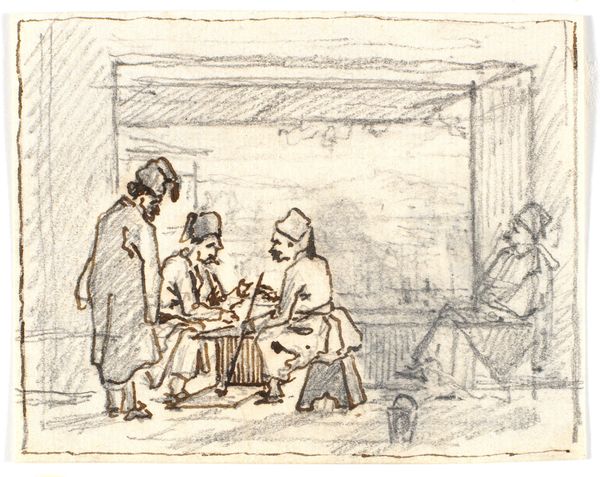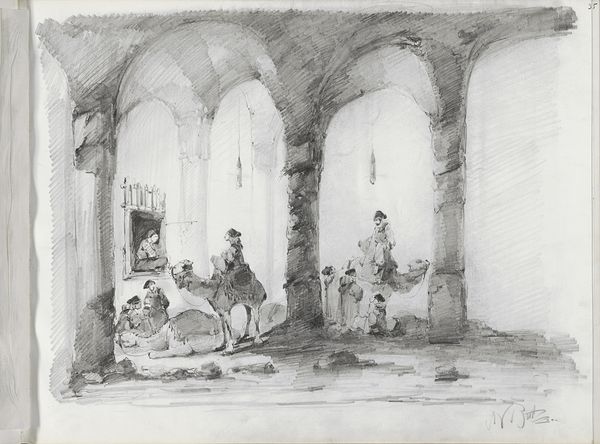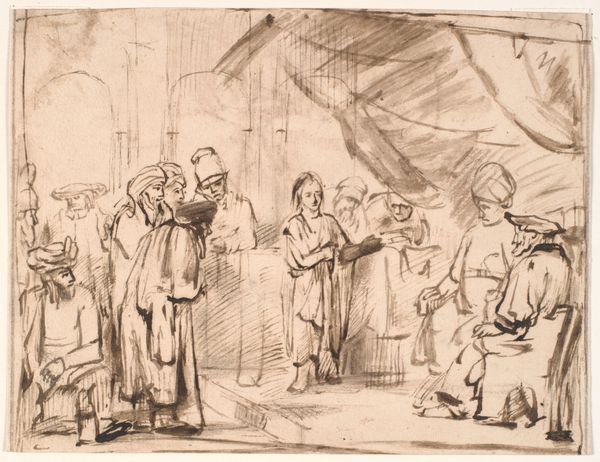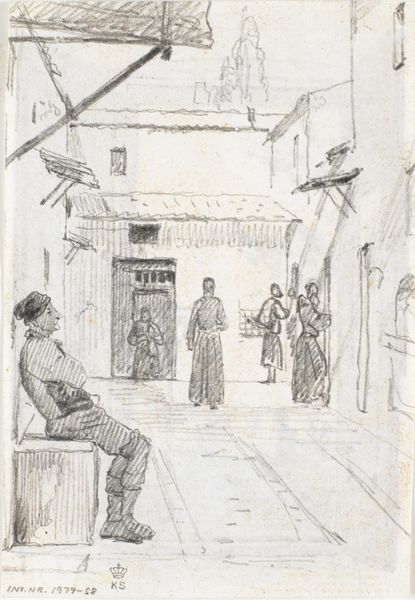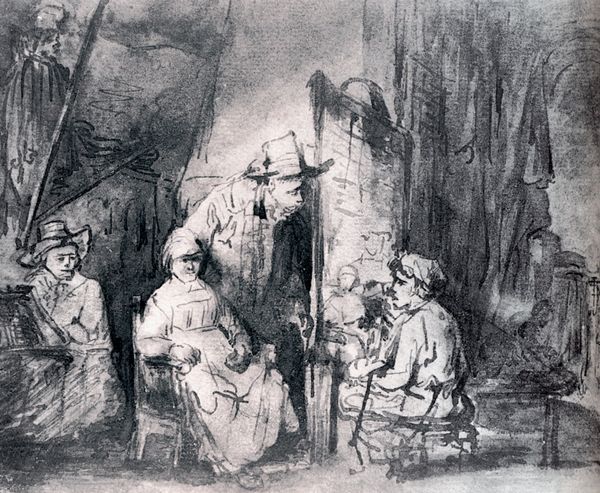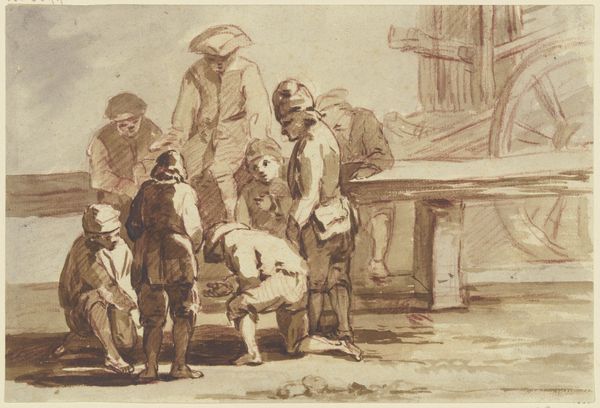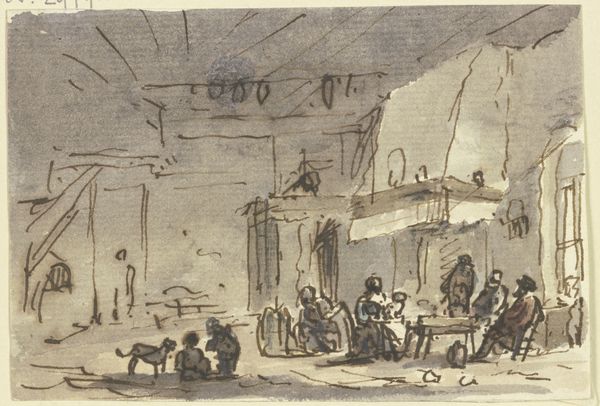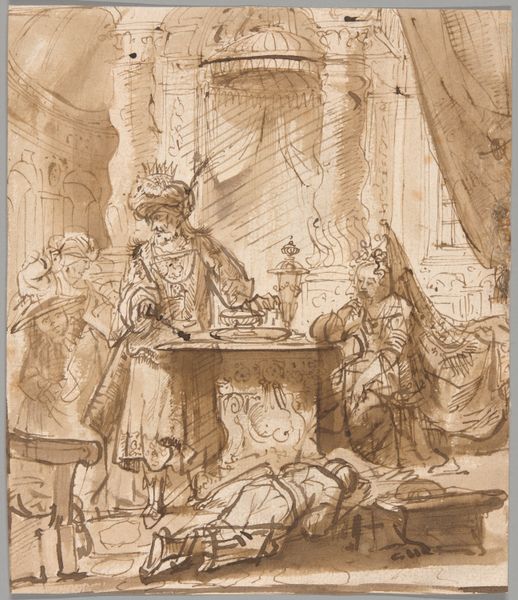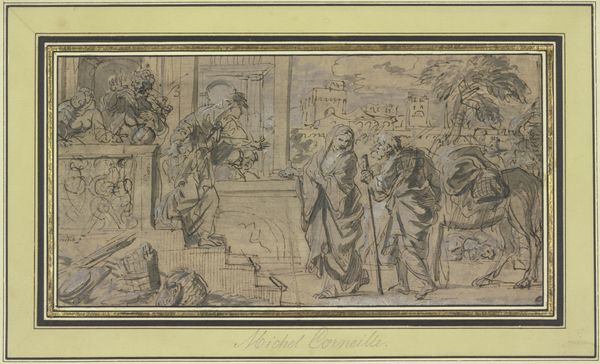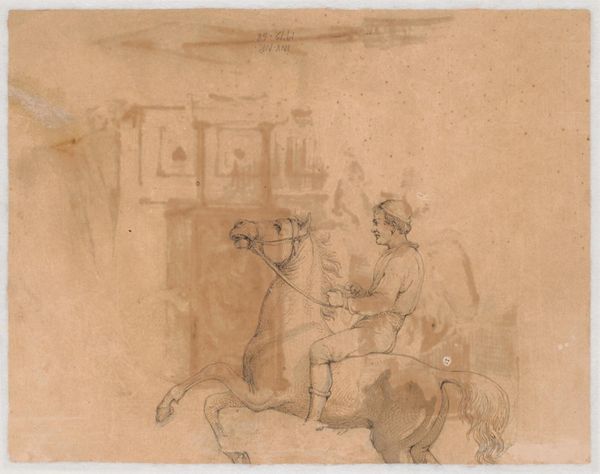
Orientalere ved et Parti Skak uden for et tyrkisk kaffehus og Barberstue 1835 - 1836
0:00
0:00
drawing, watercolor, ink, pencil
#
drawing
#
watercolor
#
ink
#
pencil
#
orientalism
#
genre-painting
Dimensions: 80 mm (height) x 102 mm (width) (bladmaal)
Editor: Here we have "Orientalere ved et Parti Skak uden for et tyrkisk kaffehus og Barberstue," a watercolor, ink, and pencil drawing by Martinus Rørbye, dating back to 1835 or 1836. It evokes a tranquil, almost dreamlike vision of daily life. I’m immediately drawn to how it seems to romanticize its subject. How do you interpret its depiction of the “Orient”? Curator: That's a key word: "romanticize." Rørbye’s work, like much Orientalist art, participates in a power dynamic. He’s presenting a view of a culture filtered through a European lens, particularly the exoticism that was popular with the bourgeois during the 19th century. How do you see that exoticism playing out visually? Editor: I see it in the architecture and the traditional clothing. They definitely create an image distinct from what someone in Denmark at the time would experience. The chess game almost feels staged, like a picturesque tableau. Curator: Precisely. This wasn’t just documentation; it was constructed imagery. The public role of this type of painting becomes really important. These works shaped, and often solidified, perceptions of “the other” for European audiences. Do you think it mattered that it was displayed at art exhibitions and potentially acquired by collectors? Editor: Absolutely. That’s how those ideas get circulated and legitimized. It makes me wonder what the artist's motivations were. Curator: Rørbye was likely catering to the prevailing tastes and interests of his patrons. He participated in, and benefited from, this production of exoticism. Recognizing that is crucial to understanding the art. Editor: So it's not just about what’s in the picture, but who is viewing it and why. I never thought about it that way before! Thanks for sharing! Curator: Exactly! And considering who commissions, collects, and curates such works continues to be essential today. Thanks for these interesting questions!
Comments
No comments
Be the first to comment and join the conversation on the ultimate creative platform.
